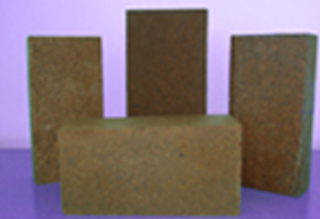The application of carbon in refractories has been widely used in the current industry. In the past, in order to adapt to new metallurgical processes and the development of refractory technology, many new products have been developed for the wholesale of magnesium bricks. Refractories experts have long known the excellent properties of different forms of carbon in refractories. Among refractory oxides, carbon can reduce the wettability of slag, molten steel, and refractory materials, increase its thermal conductivity, and reduce its expansion, so that refractory materials have excellent thermal shock resistance.
At present, the most important application areas of carbon-containing refractories are:
1. Converter, electric furnace and ladle working lining
2. Crucibles for melting metals
3. Key components for continuous casting
4. Refractory for blast furnace ironmaking
5. By adding carbon, a variety of refractory bricks can be produced, especially magnesium-carbon-based advanced alkaline refractory materials.
There are several ways to add carbon to refractories:
1. Tar pitch or synthetic resin impregnation

The open porosity of sintered oxide refractories is about 12%. Most of these pores can be filled with tar pitch or resin. Due to the volatilization of volatile matter and relatively low density, the residual carbon ratio of such products is about 2% to 3%.
2. Tar or resin bonding
Generally speaking, for the production of magnesium-carbon refractory materials, the amount of the binder is 3% to 5%, the residual carbon ratio is about 50%, and the carbon content is reduced to 1.5% to 3% after carbonization. Carbon content, 1% ~ 3% carbon black is also added, so that the carbon content in the final product is 3% ~ 6%.
3. Adding solid carbon
In addition to adding tar pitch or resin binder, 5% ~ 15% graphite can also be added, so that the carbon content in the final product is 6% ~ 18%.
Magnesia carbon brick is a typical composite material, which combines the excellent fire resistance of carbon materials with the excellent properties of the secondary dense MgO layer formed.
Smellite plays a decisive role in the corrosion mechanism of magnesium carbonaceous refractories. The mechanism is that carbon is difficult to be wetted by silicate slag (thus difficult to be penetrated by the melt), MgO is reduced by carbon, and the formed Mg vapor is oxidized again at the interface between the slag and the refractory to form a MgO layer, which inhibits further carbon oxidation. The above process will be affected by the current, and its possibility and degree of influence are the subject of research by the Institute of Ceramics, Glass and Structural Materials.
Address: Steel Industrial Park, Laobian District Industrial Park, Yingkou City, Liaoning Province Consulting Hotline: +86-133-5230-7686 +86-153-0417-8351
Technical Support: Yingkou Zhongchuang Network Technology Co., Ltd. All rights reserved.
Copyright © Yingkou Sensheng Tenai Co., Ltd. All rights reserved record number:Liao ICP No. 19013533-1 Specializing in,Welcome to inquire! Technical Support:Xiangyun platform service support:Yingkou Zhongchuang Network Technology Co., Ltd.